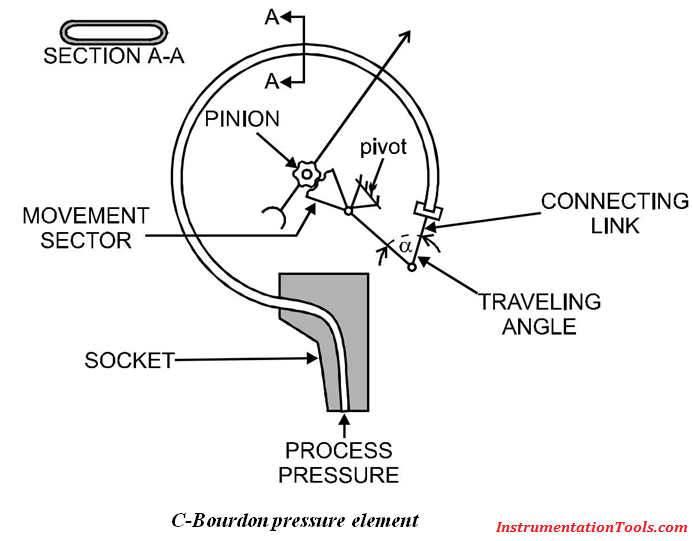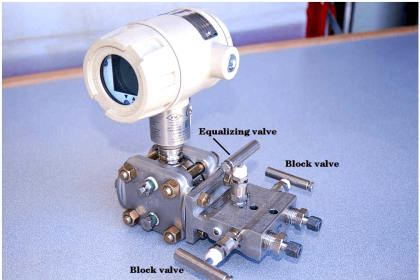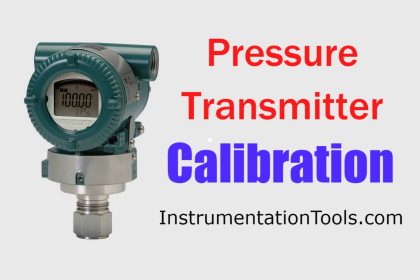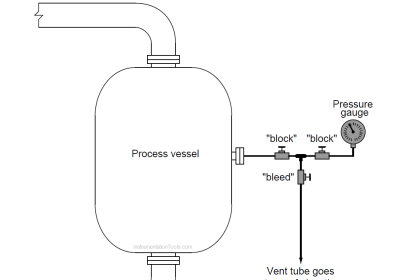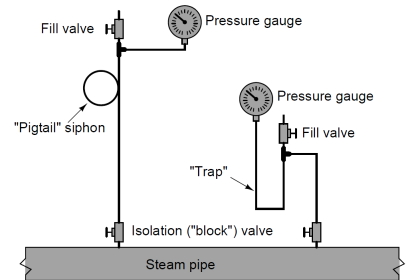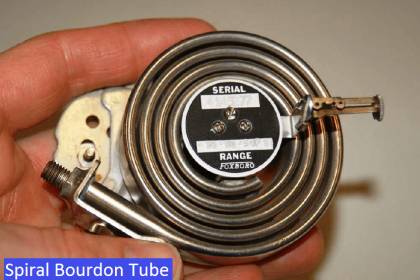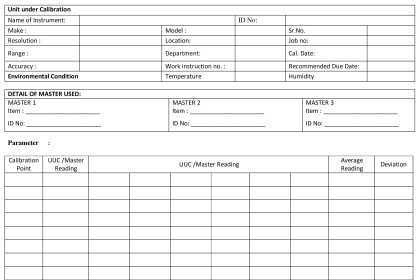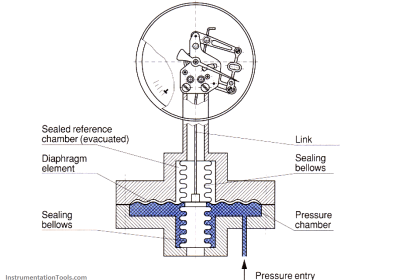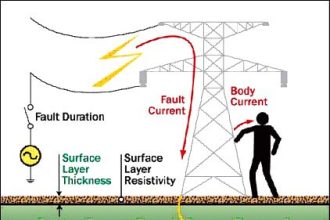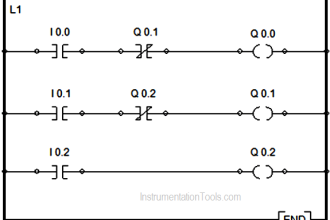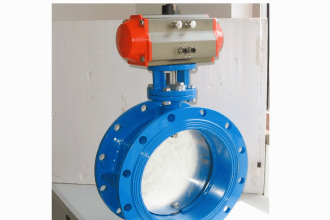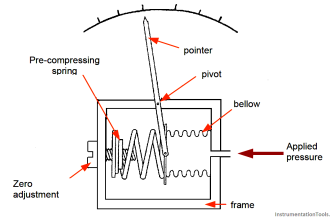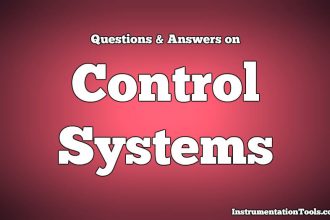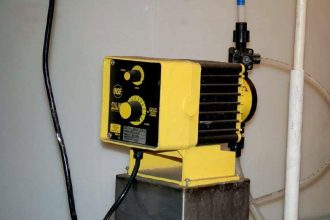The Bourdon tube works on a simple principle that a bent tube will change its shape when exposed to variations of internal and external pressure. As pressure is applied internally, the tube straightens and returns to its original form when the pressure is released.
The tip of the tube moves with the internal pressure change and is easily converted with a pointer onto a scale. A connector link is used to transfer the tip movement to the geared movement sector. The pointer is rotated through a toothed pinion by the geared sector.
This type of gauge may require vertical mounting (orientation dependent) for correct results. The element is subject to shock and vibration, which is also due to the mass of the tube. Because of this and the amount of movement with this type of sensing, they are prone to breakage, particularly at the base of the tube.
The main advantage with the Bourdon tube is that it has a wide operating (depending on the tube material). This type of pressure measurement can be used for positive or negative pressure ranges, although the accuracy is impaired when in a vacuum.
Also See: Bourdon Tube Animation
Selection and Sizing
The type of duty is one of the main selection criteria when choosing Bourdon tubes for pressure measurement. For applications which have rapid cycling of the process pressure, such in ON/OFF controlled systems, then the measuring transducer requires an internal snubber. They are also prone to failure in these applications.
Liquid filled devices are one way to reduce the wear and tear on the tube element.
Advantages
- Inexpensive
- Wide operating range
- Fast response
- Good sensitivity
- Direct pressure measurement
Disadvantages
- Primarily intended for indication only
- Non linear transducer, linearised by gear mechanism
- Hysteresis on cycling
- Sensitive to temperature variations
- Limited life when subject to shock and vibration
Application Limitations
These devices should be used in air if calibrated for air, and in liquid if calibrated for liquid. Special care is required for liquid applications in bleeding air from the liquid lines.
This type of pressure measurement is limited in applications where there is input shock (a sudden surge of pressure), and in fast moving processes.
If the application is for the use of oxygen, then the device cannot be calibrated using oil. Lower ranges are usually calibrated in air. Higher ranges, usually 1000kPa, are calibrated with a dead weight tester (hydraulic oil).
